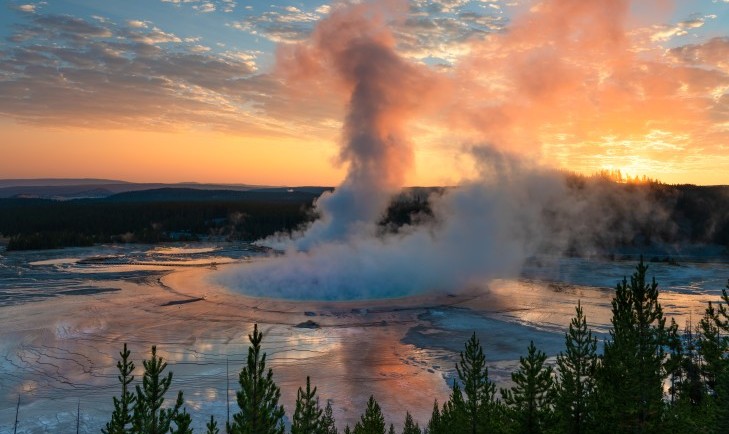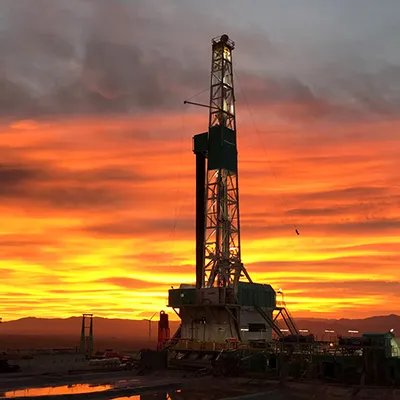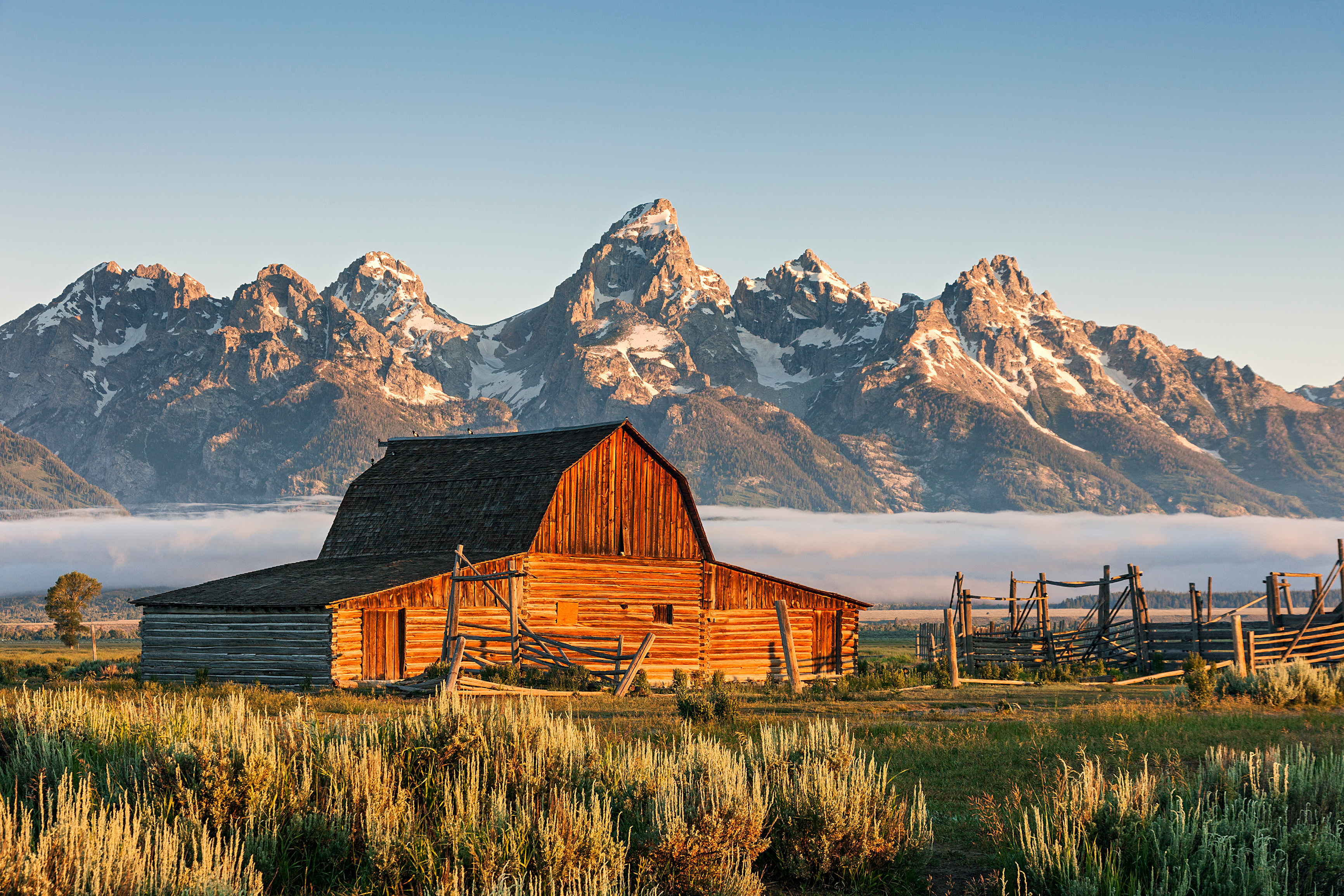09/19/24
Best of the West: Record-breaking geothermal production; national park gateway towns; overdose deaths down; Hispanic Heritage Month; big bet on recycling; tribal pollution reduction

The Western Governors' Association keeps you updated on the latest news in the West. Here are the top stories for the week starting September 16, 2024. (Photos courtesy of Adobe Stock Images)
Geothermal energy is gaining steam across the West, with promising new technologies and strategies regularly coming into the fold.
For example, the results of recent well tests at Fervo Energy’s Cape Station facility in Utah indicated that the site could be the most productive enhanced geothermal generating station in history.
The Texas-based company has drilled 15 wells at Cape Station this year, and it achieved record-breaking flow rates at the site’s first well test. With a maximum flow rate of 107 kg/s at high temperature, the site tripled the output of Fervo’s commercial pilot, Project Red.
Fervo’s technology at Cape Station is known as an enhanced geothermal system (EGS), which is gaining ground as the next frontier of the clean energy transition.
Enhanced geothermal systems create human-made subsurface reservoirs to tap for geothermal energy, which allows geothermal to be utilized in many more locations.
Traditional geothermal systems require heat, fluid, and permeability to allow fluid to move freely through hot underground formations. Enhanced geothermal carefully injects fluid deep underground to cause fractures and create permeability in the rock, allowing fluid to move through the rock, heating up as it circulates. That fluid is then pumped to the surface, where it is used to generate energy.
Learn more about enhanced geothermal systems by listening to an episode of WGA's Out West podcast with Dr. Joseph Moore and Dr. John McLennan, the Managing Principal Investigator and Co-Principal Investigator at the Utah FORGE Laboratory.
Cape Station, which is currently the largest EGS project in the world, recently received a $100 million loan from X-Caliber Rural Capital to support Fervo’s geothermal development there. The loan comes on the heels of a $25 million grant from the U.S. Department of Energy (DOE), which together highlight the public and private sector excitement surrounding geothermal today.
Not far from Cape Station, DOE's geothermal testing and research site, known as Utah FORGE, also wrapped up well testing recently, showing similarly promising results. The test achieved an injection rate of 420 gallons per minute and recovered 90% of the produced water at temperatures around 370 degrees. The temperature threshold to generate electricity from geothermal is about 300 degrees.
In addition to its Utah FORGE site, the Department of Energy is putting significant resources behind enhanced geothermal technology to help bring reliable geothermal energy to households nationwide.
Through its Enhanced Geothermal Shot program, DOE hopes to reduce the cost of enhanced geothermal by 90% by 2035. It also recognizes the potential to affordably power more than 65 million homes by using even just a fraction of the geothermal resources that could be tapped in the United States.
Just last month, DOE announced $31 million in new funding to support six enhanced geothermal projects, five of which are in the West.
The funding will support two projects in Texas, two in California, and one in New Mexico. Projects in all three states will work to support some aspect of wellbore construction in extreme conditions, which has emerged as a particular challenge for deep geothermal wells that drill into extremely hot formations. According to DOE, wellbore construction accounts for upwards of 30-40% of overall well costs.
Washington-based company AltaRock Energy is partnering with Quaise Energy to pioneer a new drilling technique known as mmWave technology that couples drilling with radiation to access greater depths and higher temperatures than traditional drilling techniques.
Using high-powered millimeter waves, mmWave technology vaporizes tough basement rock that lies below the sedimentary layer. The sedimentary layer contains water, fossil fuels, and lower-temperature geothermal energy resources, and it’s where most drilling technology can access.
By being able to bore through basement rock – which causes frequent damage and costly repairs to traditional drilling equipment – mmWave makes powerful deep geothermal resources exponentially more accessible.
For more on geothermal in the West, read Colorado Governor Jared Polis’ Heat Beneath Our Feet initiative report, which examined opportunities to expand geothermal energy production in the West.
Since the release of his report, geothermal energy projects have made significant strides in our region, and the role of geothermal in the energy picture has been further solidified. Read about all of the advancements since Polis’ report here.
Billions spent in national park gateway towns: communities on the outskirts of national parks saw record tourist spending in 2023, with $5 billion spent in gateway towns in the West last year.
At the top of the list were the towns of Moab and Springdale, Utah, which sit just outside of Arches and Canyonlands National Parks. Those two combined for a total of nearly $2 billion in spending last year.
Other hot spots included Flagstaff and Sedona near the Grand Canyon in Arizona, as well as Jackson and Cody, Wyoming, situated near both Grand Teton and Yellowstone National Parks.
National Parks.
While increased visitation brings in essential revenue to gateway communities, it can also strain the existing infrastructure in rural towns. Read Western Governors’ recent letter to Congressional leaders urging more support for the West’s public lands and nearby communities.
Overdose deaths down: for the first time since 2020, data from the Centers for Disease Control and Prevention show overdose deaths dropping nationally. Between April 2023 and April 2024, overdose deaths fell by roughly 10%, representing tens of thousands fewer lives lost.
While overdose deaths remain extremely high, experts speculate that strategies such as making overdose reversal medications like Narcan widely available and investing in treatment for opioid use disorder are beginning to pay off.
Read Western Governors’ bipartisan policy resolution, Combatting the Opioid Crisis, to learn more about the Governors’ policy strategies for tackling the opioid crisis, particularly as the West continues to struggle with some of the country’s toughest overdose challenges.
Hispanic heritage month: September 15 through October 15 is Hispanic Heritage Month, and Western Governors are recognizing and celebrating the contributions of Hispanic communities in our region.
“Whether it be in the sciences, healthcare, technology, business, activism, culture, art, agriculture or sports, this state and this nation are better places to live because of our proud multicultural heritage. I am beyond proud to lead a state where Hispanic culture, families and ways of life contribute to such a strong foundation,” said Governor Michelle Lujan Grisham of New Mexico.
In Arizona, Governor Katie Hobbs attended the annual “El Grito de Dolores” event hosted by the Mexican consulate in Phoenix in celebration of Mexican Independence Day. Governor Hobbs officially recognized September 16 as Mexican Independence Day and September 15 to October 15 as Hispanic Heritage Month.
Governor Joe Lombardo of Nevada also officially proclaimed Hispanic Heritage Month, writing, “in every corner of our State, Hispanic and Latino Americans have filled our communities with rich traditions and abundant culture, and the Silver State is proud to recognize their many contributions to our State and nation during Hispanic Heritage Month.”
Keep an eye out for Governors’ celebrations in western states throughout the month.
Big bet on recycling: Colorado Governor Jared Polis was on hand recently to break ground on a $100 million recycling complex near Denver.
Waste Management – the trash and recycling giant – will install high-tech recycling equipment to turn single-stream recycling from the Denver area into large bales of reusable products like plastic bottles, aluminum cans, and cardboard boxes.
“In Colorado we are focused on building a more sustainable future, and efforts like this one can help us reach that goal. I am excited to see businesses such as Waste Management finding innovative ways to reduce waste and recycle efficiently, while helping Colorado continue leading in clean energy and sustainability,” said Governor Polis.
Tribal pollution reduction: the Environmental Protection Agency (EPA) recently awarded $300 million to 33 tribes and one community in the Northern Mariana Islands to help reduce air pollution and tackle environmental challenges.
Recipients include the Spirit Lake Nation in North Dakota, which will purchase electric vehicles, install solar arrays, and set up a community garden. Other tribes like the Rosebud Sioux in South Dakota plan to use the funds to upgrade transportation infrastructure with electric garbage trucks and charging stations.
In all, EPA estimates that the programs will help eliminate one million tons of CO2 emissions by 2030.